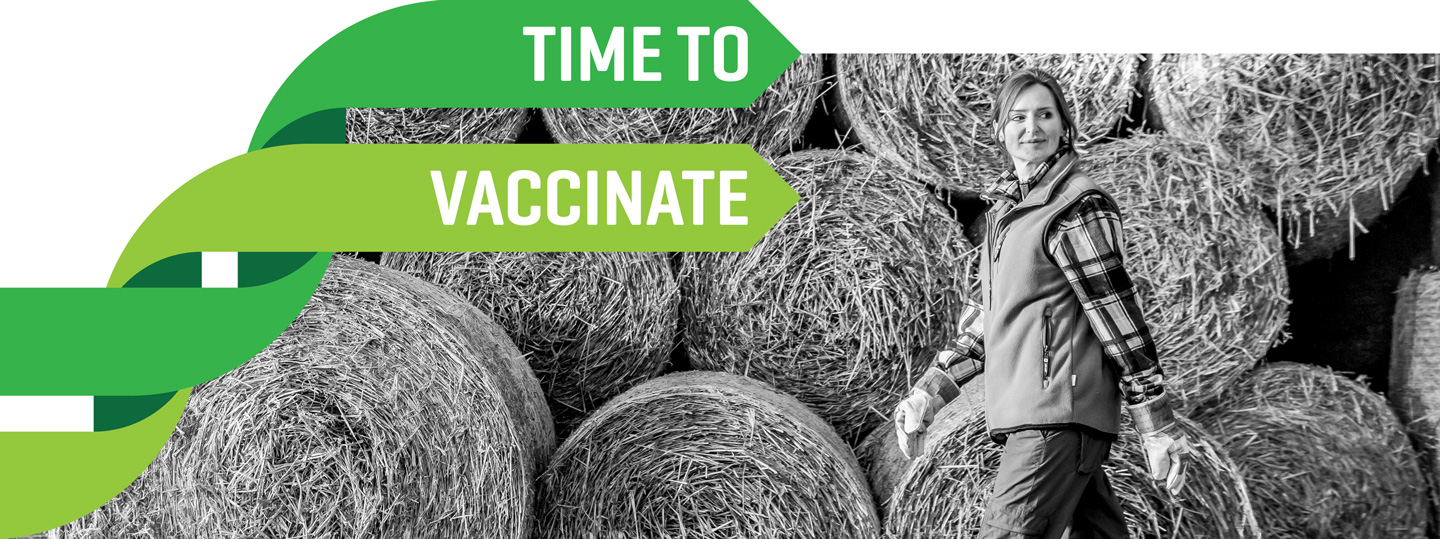
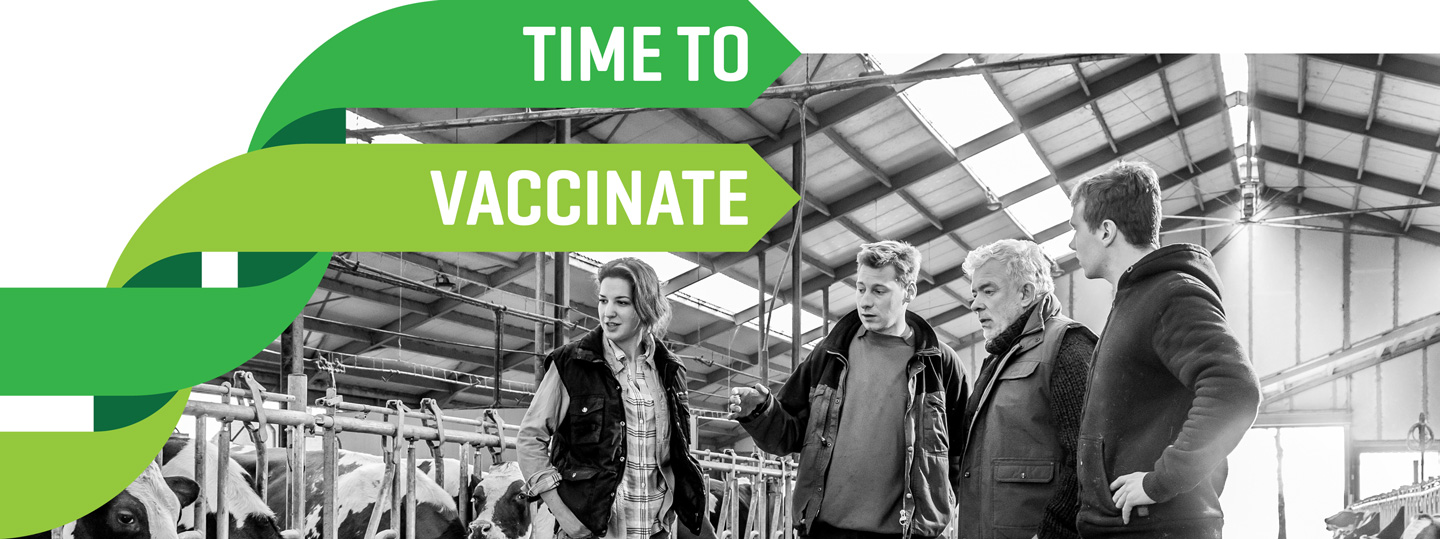
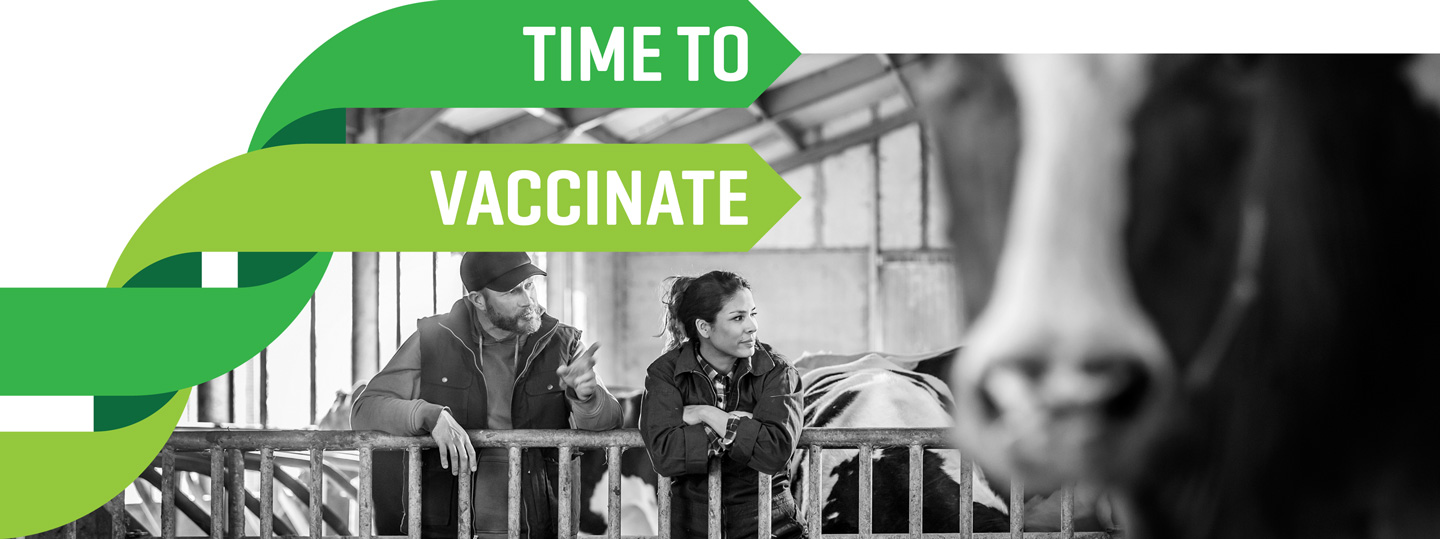
IT’S TIME!
Time to include preventive vaccination among housing, nutrition, hygiene, ventilation and other natural ways to ensure the well-being of farm animals and the sustainable production of quality milk and beef.
To activate the video player please
allow cookies in category “Performance and Operation”
and refresh this page.
“A good farmer is someone who uses all tools available to him to maximise the full productivity of his herd”
Declan & Denis O’Meara
Dairy Farmers in Tipperary country, Ireland.
ADAPTING TO CHANGE
Farmers today face growing concerns about food health and production methods among consumers, retailers and food processors. This naturally has an impact on the running of a modern farm.
Forward-looking farmers are aware of the changing norms and update their farming practices accordingly to meet their own quality standards as well as the increasing pressure from society.
THIS IS TIME TO VACCINATE
Time to Vaccinate is an initiative intended to provide farmers with information and shared experiences about vaccination as a preventive tool.
Time to Vaccinate supports farmers who have already adopted vaccination, as well as farmers who want to know more about how vaccination can improve productivity and animal health.
THE POWER OF PREVENTION
Healthy animals are important for farmers, animals and consumers. Many cattle diseases can be prevented with the protection that vaccination offers. Our confidence is based on the science we bring to this topic and the benefits a preventive approach brings to animal health status, food quality and overall farm productivity.
MEET YOUR FELLOW FARMER
IRELAND
Learn from other farmers who understand what it takes to keep herds healthy and productive by increasing their immunity against pathogens that calves and adult cattle are generally exposed to.
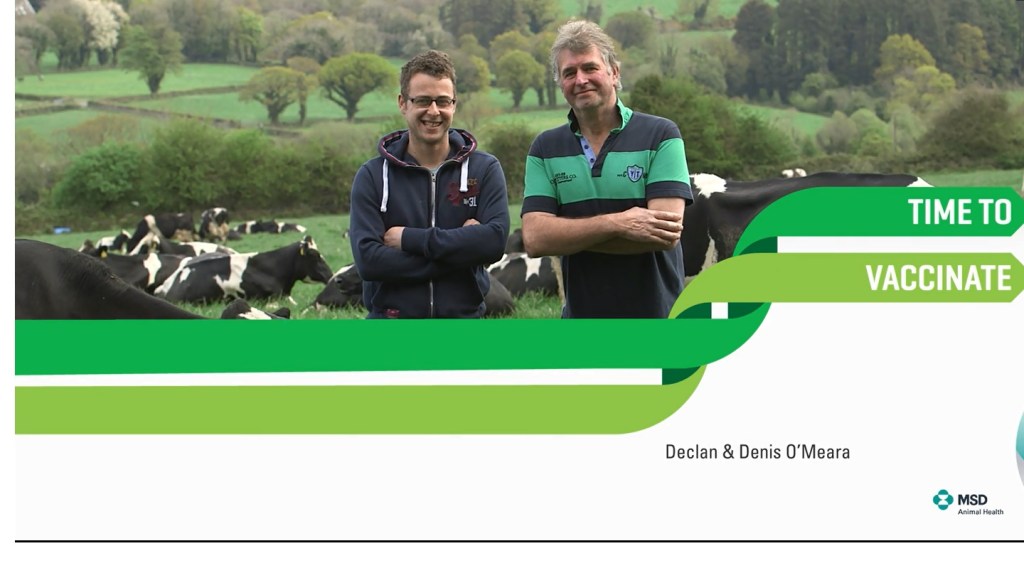
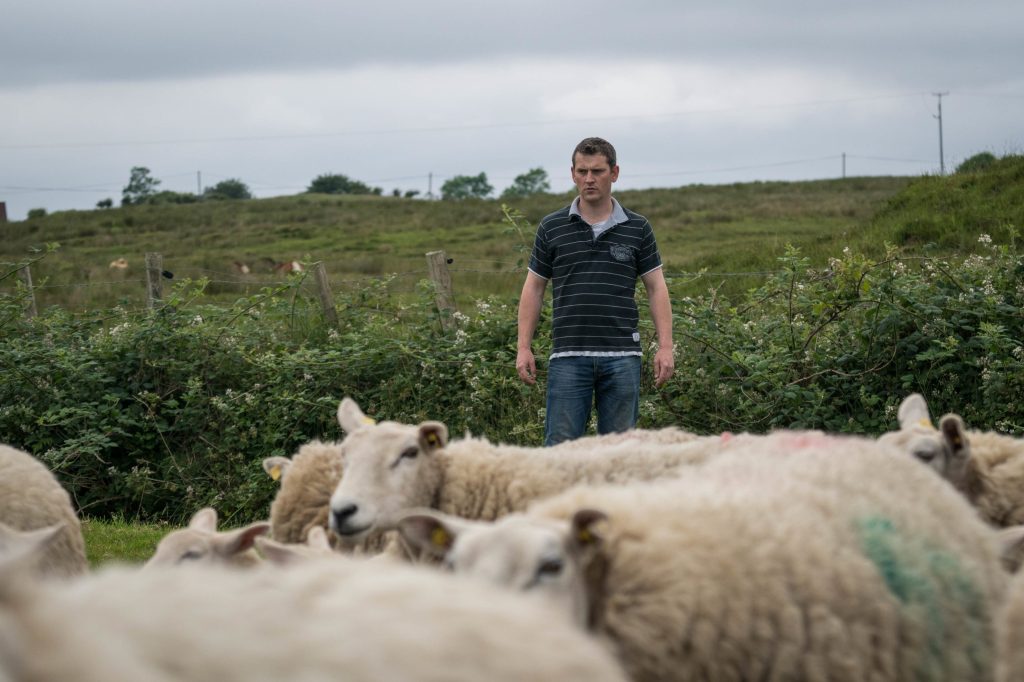

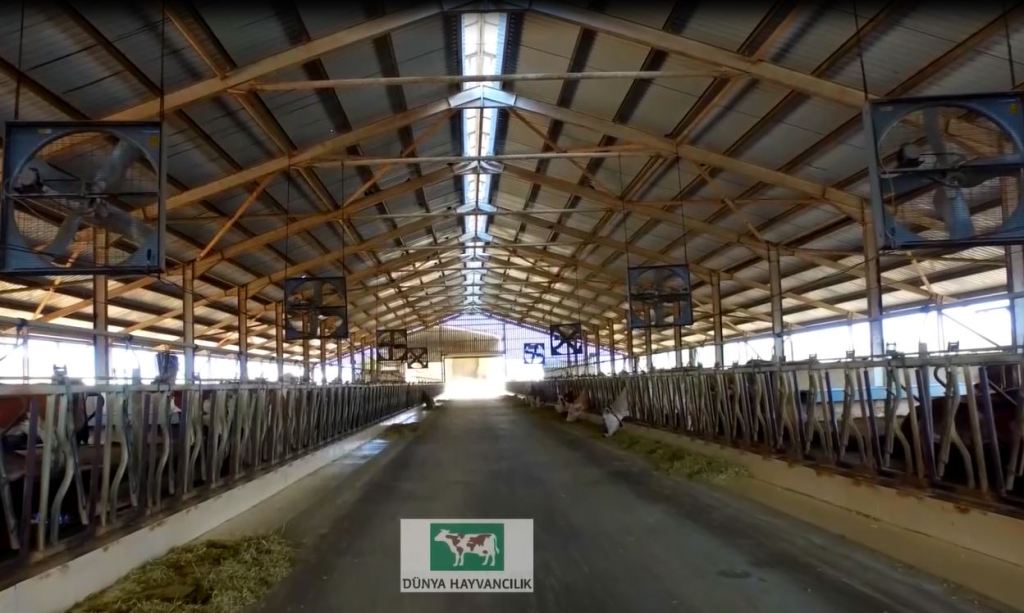

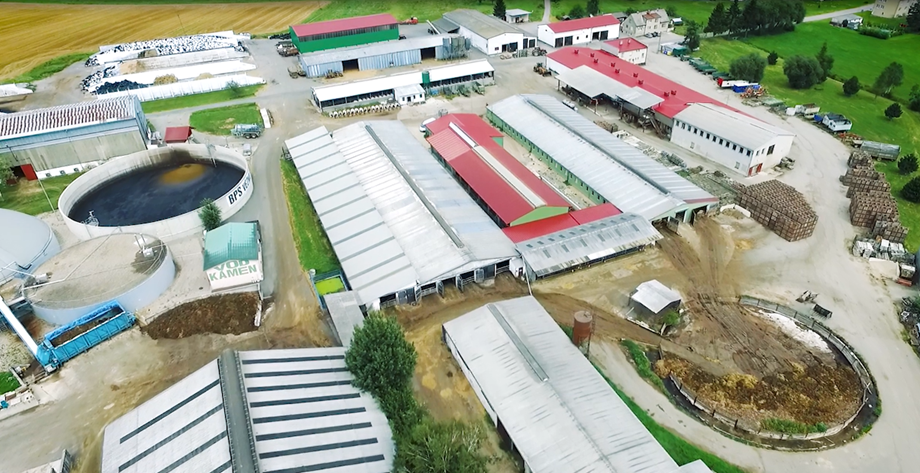




PREVENTION OF DISEASE FOR CATTLE AND SHEEP
Is there one simple solution to prevent cattle and sheep from diseases? If only it was that easy!
No, there is not. Prevention of disease requires a multidimensional, holistic program that takes factors into account, ranging from pathogen exposure level on the farm to optimized animal immunity. The Veterinary Preventative Healthcare model shows the four different levels in this comprehensive approach.
VETERINARY PREVENTATIVE HEALTHCARE
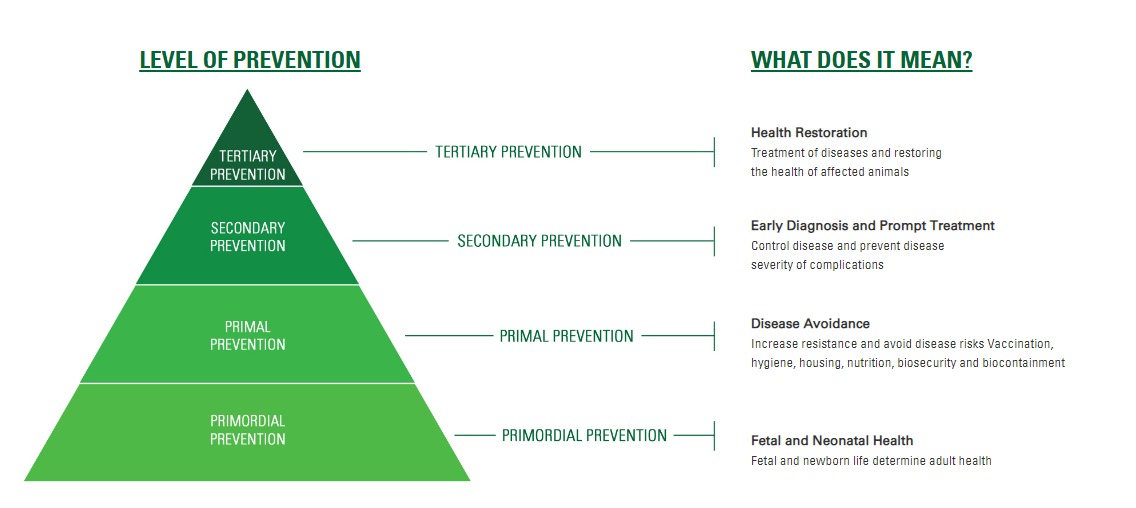
The four levels are primordial, primary, secondary and tertiary prevention.
- Primordial prevention of disease is the fetal and neo-natal period, which is fundamental, as this period has the largest influence on health later in life.
- Primary prevention is important to increase the animal’s disease resistance and avoid disease risk factors through vaccination, good hygiene, housing, nutrition and good management.
- Secondary prevention is the early diagnosis and prompt treatment of disease. This will prevent the disease from becoming more severe and will prevent complications.
- Tertiary prevention is responsible treatment aimed at trying to restore the health of sick animals in an effort to bring them back into production.
THE POWER OF PREVENTION
NEWSLETTER
“*” indicates required fields
CONTACT
Time to Vaccinate is an initiative from MSD Animal Health
For questions about Time to Vaccinate,
please send an email to
timetovaccinate@merck.com
LEARN TODAY FOR A BETTER TOMORROW
Keeping animals healthy and productive is our goal. Vaccination protects cattle from certain diseases and keeps them healthy. Read more about the most common diseases that can be controlled by vaccination.
Contact your vet for advice about vaccination programmes for your farm.
Calf Scours
Calf scours is the most common cause of death in calves. It accounts for most deaths in calves less than 1 month old1. Pathogens such as rotavirus, coronavirus, cryptosporidium and E. coli are major causes of infectious calf scours. Most farms have one or all of these pathogens 2. Young calves are very vulnerable in the first weeks of life and multiple factors (e.g. nutrition, hygiene, stress, housing or weather conditions) can trigger calf scours 3. When the dam is vaccinated before calving, she will provide colostrum that gives the calf an extra boost of protection against rotavirus, coronavirus and E. coli.
To activate the video player please allow cookies in category “Performance and Operation” and refresh this page.
Bovine Respiratory Disease (BRD)
Pneumonia or Bovine Respiratory Disease (BRD) is the most common disease in calves more than one month old. Areas of the lung emboli die and the damage is significant and permanent. Even if animals recover, their performance during their lifetime is compromised4. Multiple factors can trigger this disease. Vaccination protects young calves against the severity of pneumonia and may control outbreaks along with improvement of nutrition, hygiene, stress, housing conditions and the general immunity level in the herd.
Bovine Viral Diarrhoea (BVD) in cattle
Bovine Viral Diarrhoea is a highly infectious disease caused by a virus transmitted by infected animals. Fertility problems are a sign of infection along with a low immune response. This low immunity makes infected animals vulnerable to all kinds of other diseases. If the dam is infected during pregnancy, she will give birth to a persistently infected (PI) calf which will spread high levels of virus to other animals. The direct and indirect costs and production losses of BVD are high5. To prevent BVD, it is important to know if you have PI animals on your farm. These animals should be removed. Herds can be protected through vaccination, regular monitoring and biosecurity measurements to prevent introduction of the circulating virus.
To activate the video player please allow cookies in category “Performance and Operation” and refresh this page.
Infectious Bovine Rhinotracheitis (IBR)
IBR is caused by Bovine Herpes Virus-1 (BHV-1). This infectious respiratory disease of cattle makes cattle carriers once they are infected. Stress may reactivate IBR and the animal will start shedding the virus again, infecting other animals in the herd. Signs of IBR include fever and respiratory signs such as runny nose, discharge from the eyes and coughing. Infected animals can show a lower milk production and may experience abortion. Herds can be protected by vaccination and biosecurity measures to prevent introduction of the virus into the herd.
Clostridia
Clostridial infections of sheep and cattle are caused by a group of 10 major bacteria that exist in soil, on fields, within buildings and even in the tissues and intestines of cattle and sheep. Some bacteria can survive in the environment for years and triggers such as changes in feed and management or stress can cause them to multiply and shed toxins. The toxins spread rapidly and cause death, often within one day. Some examples of clostridial diseases are black leg, malignant oedema, black disease, tetanus, botulism and enterotoxaemia. Due to the rapid progress of the disease, it is difficult to treat it successfully. Clostridial infection can be prevented by vaccinating against the 10 key pathogens for cattle and sheep.
Lungworm
Lungworm infection can be a severe and often fatal disease, causing major damage and lesions on the lungs. Animals without immunity can become infected when grazing. During the next 4 weeks, the larvae will develop and excrete millions of fresh larvae onto the pasture, infecting other animals. A lungworm outbreak causes severe loss in milk yield, poor fertility and loss of animals. The vaccine is given orally to young stock for active immunisation to reduce the clinical signs and lesions. Animals will gain lifetime immunity from contact with lungworm.
Ringworm
Ringworm in cattle is a fungal infection of the skin. The ring-shaped lesions on the skin are easy to identify and leave scarring on leather hides. Animals affected with ringworm show reduced growth and production losses and the infection can be transmitted to people who work with infected cattle. Ringworm is not easy to control. Fungal spores are very resistant, can survive in the environment for months and are spread easily by infected animals. Vaccination protects animals against ringworm infections and reduces the impact of existing infections. Disinfection of housing and the environment is important to prevent the spread of ringworm.
Foot rot in sheep
Foot rot is one of the most common causes of lameness in sheep. This disease is highly infectious and can spread easily through the flock. The indirect costs of lameness are significant – reduced productivity, fertility and longevity. If more than 5% of the flock is lame, a control plan is needed. This plan consists of 5 steps: Treatment of the infected animals, preventing spread, vaccination of the entire flock, culling of persistently recurring animals and quarantine for animals introduced to the flock.
Abortion in sheep
Chlamydophila abortus is one of the most common causes of abortion6. The bacteria can be transmitted from sheep to sheep and the main source of infection is aborted foetuses and infected ewes which shed the bacteria. The costs of abortion are significant. Control of the disease focuses on diagnosis of the cause, preventing its spread (removal of aborted foetuses and material), separation of infected animals and vaccination to protect ewes. Vaccination will give 3 years of immunity and will reduce the number of abortions on infected farms.
References
1. USDA, 2007, Dairy, part 1: Reference of Dairy Cattle Health and Management Practices in the United states, USDA-APHISVS, CEAH, #N480.1007. National Animal Health Monitoring System, Fort Collins, CO.
2. Bartels, C.J.M., Holzhauer, M., Jorritsma, R., Swart, W.A.J.M., Lam, T.J.G.M.,2010. Prevalence, prediction and risk factors of enteropathogens innormal and non-normal faeces of young Dutch dairy calves. Prev. Vet.Med. 93, 162–169.
3. Lorenz, I., Fagan, J., More, S.J., 2011. Calf health from birth to weaning. II.Management of diarrhoea in pre-weaned calves. Irish Vet. J. 64, 9.
4. Bach A., 2011, Associations between several aspects of heifer development and dairy cow survivability to second lactation, J. Dairy Sci. 94 :1052–1057.
5. Weldegebriel, H.T., Gunn, G. J., Scott, A.W. 2009, Evaluation of producer and consumer benefits resulting from eradication of Bovine Viral Diarrhoea (BVD) in Scotland, United Kingdom. Prev. Vet. Med. 88, 49–56.
6. Kerr, K., Entrican, G., McKeever, D., Longbottom, D., 2005, Immunopathology of Chlamydophila abortus infection in sheep and mice, Research in Vet. Sci. 78- 1, 1–7.
VACCINE FACTS?
By 2050, it is estimated that the world’s population will increase by 34% to 9.1 billion people. Global food production output must double to meet the world’s demand for food.1 Animal disease reduces global food production by 20%2 and costs farmers a significant proportion of their meat, fish, and dairy yield. Preventing disease-related costs is crucial if we are to meet the growing global demand for protein, and vaccines are the first-line defense against disease.
HOW DO VACCINES WORK?
Vaccines work to prime the immune system against future “attacks” by a particular disease. When a pathogen enters the body.
the immune system generates antibodies to try to combat it. Some of the antibodies that are created will remain in the body.
In the event of exposure to the same pathogen in the future, the antibodies will recognize it and fight it off.
Types of vaccines:
- Inactivated (killed) vaccines contain whole viruses or bacteria which have been inactivated by heat, radiation, or chemical treatment. They are usually coupled with an adjuvant that acts as a stimulant to enhance the animal’s immune response.
- Live attenuated vaccines contain whole viruses or bacteria which have been weakened. They offer better stimulation of the immune response and require lower doses of the bacteria or viruses. Ideally, they should not cause any clinical signs of disease.
WHAT’S THE ROLE OF BIOTECH IN VACCINES?
Biotechnology is a broad discipline in which biological processes, organisms, cells, or cellular components are harnessed to develop new technologies, tools, and products for use in research, agriculture, industry, and the clinic.
Biotechnology benefits the health and welfare of animals, helps control infectious livestock diseases, and fosters food availability and farmers’ livelihoods by:
- Enabling the discovery of new tools to diagnose, prevent, control, treat, and even eradicate diseases.
- Simplifying the use of medicines and vaccines.
- Actively protecting animals against two or more diseases in a single product.
- Enabling the use of a wider variety of administration routes.
- Providing increased stability of veterinary products, which allows more efficient use of vaccines in warm climates.
- Vaccines developed using biotechnology offer significant advantages over conventional technologies.
- In modified live vaccines, the pathogen – virus, bacterium, or parasite – has been weakened, or attenuated, so it can mimic the original pathogen and induce a protective immune response without causing the disease.
- Alternatively, a host vector — a safe strain of a virus, bacterium, or parasite — is used to express proteins from a pathogen, resulting in a protective immune response against that pathogen.
- Many modern vaccines can provide greater efficacy even address that were previously impossible to vaccinate against.
- Porcine circovirus (PCV) is produced from a recombinant baculovirus, a double-stranded DNA virus which result in a very potent vaccine to protect swine.
- Streptococcus equi is a bacterium that infects horses, causing the lymph nodes to swell and suffocate the animal. Specific gene deletion has converted a virulent field strain of the bacterium into a stable and safe vaccine strain that can be administered via the lip of the animal, providing protection against disease in the lymph nodes located nearby.
- Modern vaccines can protect against multiple diseases with on dose.
- In poultry, HVT (herpesvirus of turkeys) recombinant vaccines protect against two diseases, infectious laryngotracheitis (ILT) and Marek’s disease, with one administration, providing lifelong protection.
- There is also an HVT recombinant vaccine that offers poultry lifelong protection against Newcastle disease and Marek’s disease with one dose, compared with live Newcastle disease vaccines which have short durations of protection and must be applied multiple times in long-living birds.
- Modern vaccines provide greater options for application techniques, enhancing animal welfare and facilitating administration.
- Whereas conventional live ILT vaccines must be given by eye drop and can cause reactions which can be stressful for the birds, HVT recombinant vaccines can be administered in ovo before the birds hatch and uniformly protects the flock.
- Through the use of gene deletion and gene modification, “marker vaccines” can be engineered that make it possible to tell which animals are infected and which have been vaccinated.
WHAT ARE VACCINES?
A vaccine is a biological preparation that improves immunity to a particular disease. It typically contains an agent that resembles a disease-causing microorganism, and is often made from weakened or killed forms of the microbe or its toxins.
- As in human health, vaccines play an important role in keeping animals healthy and free of disease, and preventing illness in individual animals or herds.
- The same welfare concerns that drive vaccination in companion animals or pets such as dogs, cats, and horses also apply to food-producing animals.
- It is always preferable to prevent disease in people or animals rather than having to resort to treatment.
WHY VACCINATE?
Vaccines used in food-producing animals contribute to animal health and well-being as well as human and public health by preventing disease, minimizing the transmission of zoonotic diseases between humans and animals, and minimizing the spread or incidence of food-borne pathogens.
Vaccines benefit animals
- Animal vaccines are considered the first line of defense against diseases.
- Vaccines reduce the need for treating illness3
- Less disease and illness means improved animal health and well-being.
Vaccines benefit people
- Vaccines protect animals from contracting diseases that they may then transmit to humans4.5
- Vaccines minimize the likelihood and spread of food-borne pathogens6.
- Vaccines help keep food affordable. By keeping animals healthy, food can be produced using fewer resources6.
Vaccines benefit the environment
- Animal vaccines reduce death loss in animal herds, which means we don’t have to treat animals for illness as often and fewer resources are used or wasted7.
- Healthy animals require fewer resources to raise, which reduces the environmental footprint of raising animals7.
REFERENCES
1. Food and Agriculture Organization. How to Feed the World in 2050. http://www.fao.orgffileadmin/templates/wsfs/docs/expert_paper/How_to_Feed_the_World_in_2050.pdf
2. Editorial by B. Vallat, Director General of the World Organization for Animal Health (OIE), 30 April 2009.http://www.oie.int/for-the-media/editorials/detail/article/one-world-one-health/
3. Rose, N. and Andraud, M. The use of vaccines to control pathogen spread in pig populations. Porcine Health Management. 2017. 3:8 DOI. 10.1186/s40813-017-0053-6.https://porcinehealthmanagement.biomedcentral.com/articles/10.1186/s40813-017-0053-6. Accessed August 3, 2017.
4. Farrington, C. P. On vaccine ef cacy and reproduction numbers. Math Biosci. 2003. 185:89-109.http://izt.ciens.ucv.ve/ecologia/Archivos/ECOLOGIA_DE%20_POBLACIONES_Hasta%202004/ECOL_POBLAC_Hasta%202004_(A-G)/Farrington%202003.pdf.Accessed August 3, 2017.
5. 5. Roth, J. A. Veterinary Vaccines and Their Importance to Animal Health and Public Health. Procedia in Vaccinology. 2011. 5:127-136.http://ac.els-cdn.com/S1877282X11000270/1-s2.0-S1877282X11000270-main.pdf?_tid=b9d9e840-9803-11e7-ace0-00000aacb35e&acdnat=1505252922_65fef46b434fb96a9017e386b906543b. Accessed August 3, 2017.
6. United States Department of Agriculture. Animal and Plant Health Inspection Service. Veterinary Services. Centers for Epidemiology and Animal Health. Vaccination of Cattle and Calves on U.S. Beef Cow-calf Operations.https://www.aphis.usda.gov/animal_health/nahms/beefcowcalf/downloads/beef0708/Beef0708_is_GenVacc.pdf
7. American Meat Institute. The Facts About Antibiotics in Livestock & Poultry Production. Sort fact from fiction.https://www.meatinstitute.org/index.php?ht=a/GetDocumentAction/i/99943. Accessed August 15, 2017.



